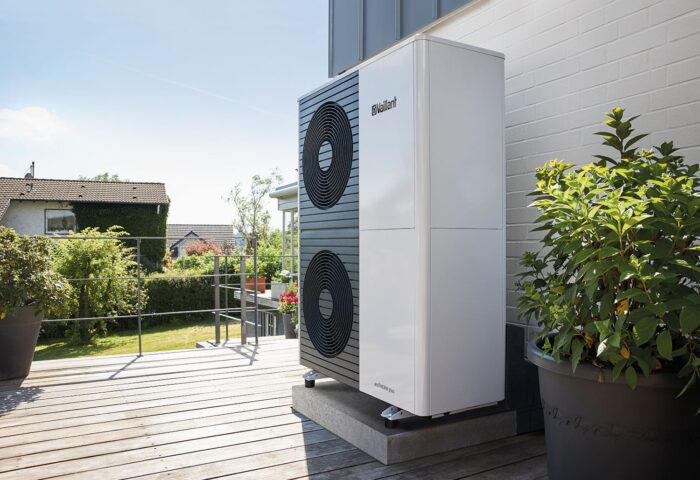
Air source heat pumps (ASHPs) are a renewable energy technology that extract heat from the outside air and use it to heat homes. These exciting new replacements for gas boilers are taking the world by storm for good reason. They work by taking in air from the outside, using a refrigerant to absorb the heat from the air, which is then compressed to increase its temperature.
The hot refrigerant is then circulated through a coil inside the building, releasing the heat and warming up the indoor air. In this blog, we’ll take a closer look at how air source heat pumps work, their advantages, and their potential drawbacks.
How Do Air Source Heat Pumps Work?
ASHPs work on the same principle as a refrigerator or air conditioner, using a refrigerant to absorb heat from one place and release it in another. The process starts with an outdoor unit, which contains a compressor, a heat exchanger, and a fan. The fan draws in air from the outside and passes it over the heat exchanger, which contains the refrigerant. The refrigerant absorbs heat from the air, which causes it to evaporate into a gas.
The gas is then compressed by the compressor, which increases its temperature. The hot refrigerant is then passed through a condenser, which is located inside the building, where it releases the heat and returns to a liquid state. The heated liquid is then circulated through a coil or radiator, which warms up the indoor air.
While earlier heat pumps worked best in milder climates, modern versions are rated to work in temperatures as cold as -40 C. Norway is one of the largest users of air source heat pumps, where the average winter temperature is below -6C!
Advantages of Air Source Heat Pumps
- Energy Efficiency
ASHPs are more energy-efficient than traditional heating systems such as gas boilers. This is because they use electricity to move heat rather than generating heat themselves. This means they can produce up to 3x more energy than they consume, making them a cost-effective and sustainable choice.
- Low Carbon Footprint
ASHPs produce far fewer greenhouse gas emissions than traditional heating systems, as they don’t burn fossil fuels. This means they can help reduce your carbon footprint and make your home more environmentally friendly. Paired with solar, you can power your entire home heating and electricity with low carbon, self-generated electricity.
- Perfect for the UK
Due to milder temperatures, with less extreme cold and heat, the UK is perfect for heat pumps in domestic properties.
- Grant funding
The Boiler Upgrade Scheme in the UK entitles most properties in the UK to claim a £7,500 grant towards the cost of their installation, significantly reducing upfront installation costs.
Potential Drawbacks of Air Source Heat Pumps
- Upfront Costs
ASHPs can be more expensive to install than traditional heating systems, although this cost can be offset by long-term energy savings and government grants.
- Noise
Modern heat pumps are significantly quieter than older models, but attention should be paid to where it is placed and whether it would disturb any neighbours.
- Space
ASHPs require outdoor space for the unit and sufficient indoor space for the heat distribution system.
Conclusion
Air source heat pumps are a popular choice for homeowners who want to reduce their carbon footprint and energy bills.
They are a sustainable and energy-efficient alternative to traditional heating systems, like boilers. While ASHPs can be more expensive to install than boilers, they offer long-term energy savings whilst reducing your carbon footprint.
With proper installation and maintenance, an air source heat pump can provide reliable and efficient heating for your home.
Contact Novus Energy for a free no obligation survey and quotation.